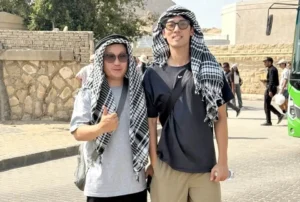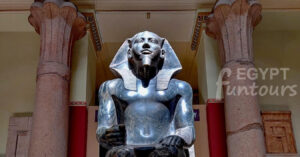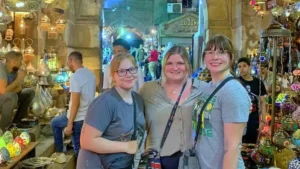Other Ancient Egyptian Festivals

The Heb-Sed Festival
The Heb-Sed (Jubilee Festival) was a specialized celebration held every 30 years to honor the king and confirm his divine right to rule. It was a crucial political and religious event that blended religious devotion, political power, and public spectacle. The festival was so important that kings could even celebrate it earlier than the 30-year mark if they needed urgent help from the gods.
Purpose and Rituals: The primary purpose of the festival was to revitalize the king and prove he was still fit to lead the people. The festival began with a grand procession held in front of priests, nobles, and the public, demonstrating the king’s vitality and his connection to the divine. This was followed by a physical test where the king would run around an enclosure. He would then fire arrows in the four cardinal directions, a symbolic act that represented his power and ability to conquer foreign nations.
Significance: The Sed Festival was a great honor for the king and a cornerstone of ancient Egyptian culture. People believed the prayers he made during the festival were among the most powerful he could ever utter. The prayers ensured divine favor and the stability of the kingdom.
Tekh Festival: The Ancient Egyptian Festival of Drunkenness
The Tekh festival, or Feast of Drunkenness, was a Middle Kingdom celebration honoring Hathor and commemorating a myth where alcohol saved humanity. According to the myth, the god Ra sent Sekhmet to punish humanity, but she became so bloodthirsty that Ra had to stop her. He ordered beer to be dyed crimson, which Sekhmet drank, mistaking it for blood. She then fell asleep and awoke as the benevolent Hathor. The festival involved worshipers getting drunk and then being awoken by drums to connect with Hathor and Mut in the Hall of Drunkenness.
Sokar Festival
In Egypt’s Early Dynastic Period (c. 3150 – c. 2613 BCE), Sokar was an agricultural god whose attributes Osiris later adopted. In the Old Kingdom, they combined the Sokar Festival with the somber Khoiak Festival of Osiris, which commemorated his death. The solemn event evolved to incorporate Osiris’ resurrection, and the ancient Egyptians celebrated it for over a month during the Late Period (525-332 BCE). During the ceremonies, people planted Osiris Gardens and crops to commemorate the deity as the plants sprang from the soil, representing Osiris’ rebirth from the grave. Planting crops during the event most likely dates back to Sokar’s early devotion.
Bast Festival / Bastet Festival
Another prominent event was the worship of the goddess Bastet at her cult center of Bubastis. It commemorated the birth of Bastet, the cat goddess who was the defender of women, children, and women’s secrets, as well as the guardian of hearth and home. According to Herodotus, Bastet’s celebration was the most extravagant and well-attended in Egypt. According to Egyptologist Geraldine Pinch, who quotes Herodotus, “During the yearly festival in Bubastis, the law liberated women from all restrictions. They drank, danced, made music, and displayed their genitals to commemorate the goddess’s festival “.
As reported by Herodotus, the women’s “lifting of the skirts” during festivals showed a liberation from usual restraints and was also related to reproduction. Herodotus claimed over 700,000 people attended the celebration, and this figure may be accurate, as the goddess was one of the most popular in Egypt among both sexes. The event included dancing, singing, and drinking to honor Bastet for her gifts and to request future blessings.
Nehebkau Festival
Nehebkau was the deity who, at birth, connected the ka (soul) to the khat (body) and, after death, bound the ka to the ba (the soul’s wandering aspect). As the people celebrated rebirth and renewal, the celebration marked Osiris’ resurrection and the restoration of his ka. In many ways, the celebration was comparable to the Wepet-Renpet New Year’s Festival.
Min Festival
The Min Festival honored the god of fertility, Min, and began in the Early Dynastic Period. It became exceptionally significant in the Middle Kingdom. The festival was a procession where priests carried a statue of Min out of the temple, accompanied by singers and dancers.
Purpose and Rituals: During the festival, the king would ceremonially cut the first sheaf of grain, symbolizing his connection to the gods, the land, and the people. He would then lead the people in offering the grain to the deity. This ritual celebrated both the monarch and the god. They expected a happy and productive reign. They also hoped it would bring fertility to the country and its people.
Thoth’s Festival
The Thoth Festival was an ancient Egyptian celebration for the god of writing, wisdom, and knowledge, Thoth. Historians believe Egyptians celebrated it around August 6, coinciding with the Wag Festival.
Rituals and Significance: During the festival, religious leaders would lead special prayers and give blessings to honor Thoth’s role as a record keeper and facilitator in the hall of judgment. These rituals not only paid homage to Thoth but also reinforced the ethical codes central to ancient Egyptian society. The festival also included community gatherings for reflection, strengthening social bonds and communal values.


































